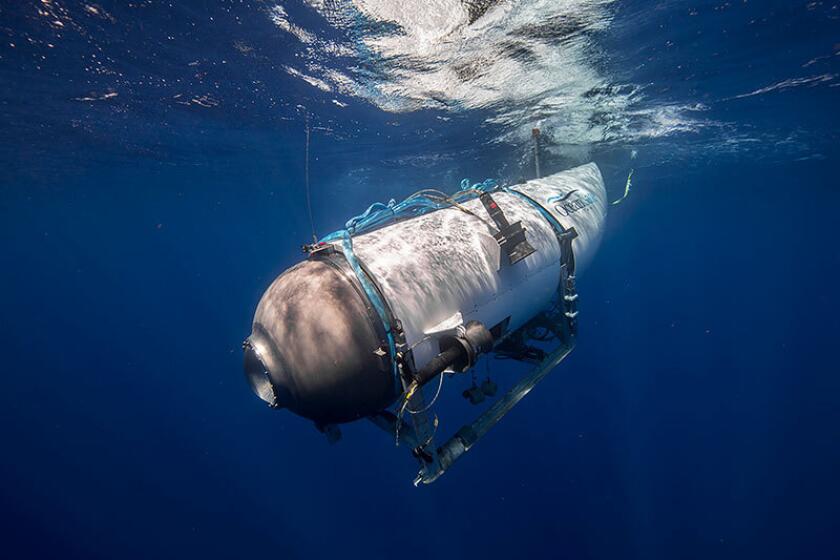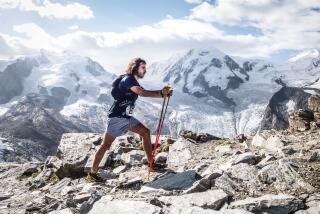Should you chase the thrill? After Titan, adventurers weigh the risks of extreme travel
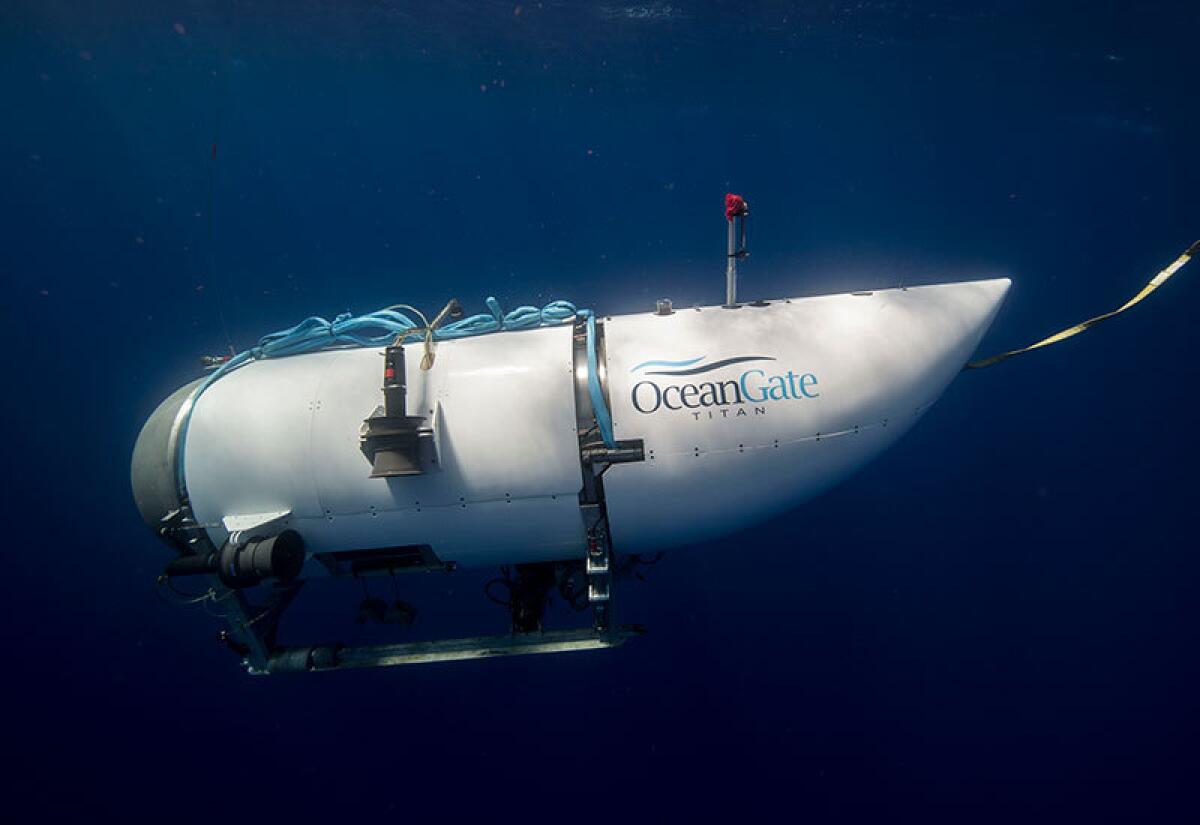
- Share via
Where is your line? On your mental chart of risk and reward, where does yes become nope?
The Titan implosion on the sea floor off Newfoundland last week has many of us considering that question.
For the disaster’s five victims, it seems the prospect of exploring the Titanic wreckage was too tempting to pass up. Yet many otherwise bold travelers wouldn’t have dared climb into the vessel, even if the ride were free.
The five people aboard a submersible that vanished on a trip to explore the Titanic wreckage have died after a catastrophic implosion, the U.S. Coast Guard says.
As a society, “We live in more comfort than we ever have, and we face fewer risks than we ever have. As that general decrease of risk has happened, our tolerance for it has seemed to decrease,” Sivani Babu told me recently.
Babu, who stepped away from her career in law to become a Santa Barbara-based photographer, writer and co-founder of the travel website hiddencompass.net, recently turned down a chance to go trekking in Nepal at 17,000 feet. When a friend arranged to cycle Bolivia’s notorious “Death Road” in Bolivia, Babu was not tempted.
Yet she has been storm-chasing for years. And Babu has visited Antarctica more than once by sailboat, lurching across heaving, frigid seas for a chance to photograph epic slabs of ice.
“When I take risks, I learn not just about myself but about the world around me,” she said. “Exploration for me and for Hidden Compass is not about conquering or being the first to do something. It’s about learning about ourselves and the world. And the reward that comes with that is huge.”
The more we think about the unnecessary physical risks we take in life — the off-duty moments we spend on mountains, on water, snow, sand and city streets, in the company of imperfect machinery and people — the less we agree.
Drawing on our own histories and assumptions, we all think and feel differently about what risks are worth the rewards. Perhaps, if you’re making decisions on behalf of loved ones — say, you’re a parent of young children — you become more conservative. Some studies point to the influence other people have on our decisions. Other research suggests that risk-taking behavior may be partially genetic. One way or another, it seems clear that feeling often overwhelms thinking.
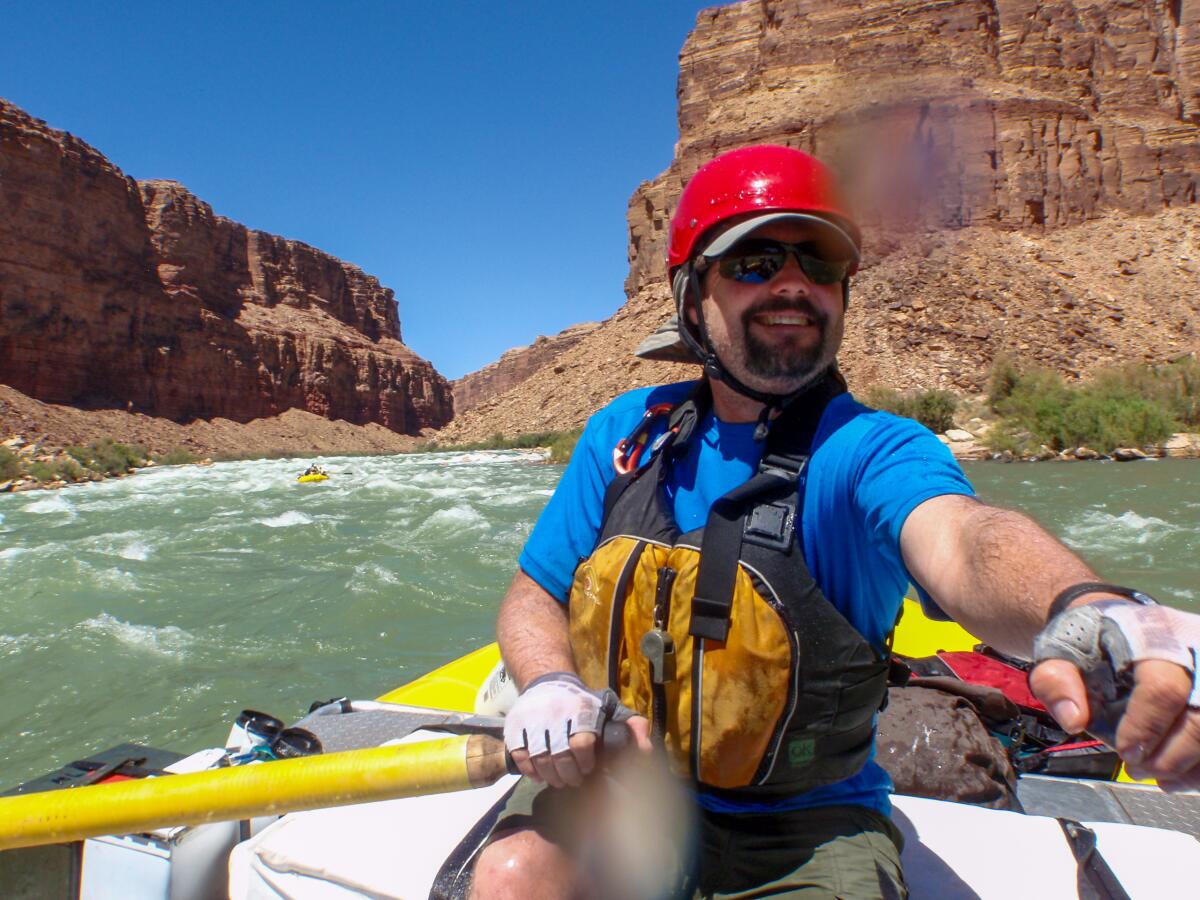
I’ve watched fellow travelers make all sorts of choices.
Michael Shapiro, a Northern California writer and veteran river-runner, remembers being offered a chance to raft the Upper Tuolumne River’s Cherry Creek — “a Class 5-plus, narrow, fast, scary river” — about 30 years ago.
He was about 30 at the time, single, without kids, but he realized, “If were to die, it would affect a lot of people. I didn’t want to take that risk. Cherry Creek is the most challenging commercially rafted river in California. ... I just had a feeling in the pit of my stomach.”
But about 23 years later, in 2016, Shapiro said yes to another river challenge: a private rafting trip through the Grand Canyon.
By then he’d served as captain and guide on many California rivers, and he’d rafted the Colorado River. But this was his first invitation to serve as a boat captain on the Colorado, responsible for rigging and steering a 16-foot inflatable raft and getting his passengers through 226 miles of scenic but treacherous water.
This time he said yes. Why?
The Colorado is relatively wide, and “I’m just more scared of the narrow, fast rivers where entrapment [underwater] is more of an issue.”
All went well up to day 13 of 16, when the group of rafters approached Lava Falls, “the gnarliest rapid I’ve ever navigated” and one you can’t avoid by portaging.
To navigate it he had two 10-foot oars. Two of his three passengers had paddles.
“The force of that rapid, if you get caught in the center hole, is absolutely overwhelming. ... People break femurs in there. There have been fatalities in there,” he said. Just two years before, a good friend and veteran adventurer had nearly died there.
Shapiro was nervous. In fact, he’d suggested that his wife, Jackie, switch to another raft. She had declined. Into Lava Falls they went.
“It was 20 seconds of just intense focus,” Shapiro said. “There was a moment near the end when our right side started to rise, but I called ‘high side!’ and it was fine.”
Coming into the clear, Shapiro’s body unclenched for the first time in days, he said.
Would he do it again? “I would love to go back, but I don’t want as much responsibility.”
I’ve never steered anyone through the Grand Canyon. But in the course of writing about travel over the years, I’ve come across many situations rich with risk and reward. I stand by most of my choices but definitely not all.
Board a submarine? Only a retired one, floating on the surface in port.
Scuba dive? Nope. Yet once, in South Africa, I signed up to descend offshore in a metal cage with a modified snorkel so that I could see great white sharks up close. On the night before, the trip was scrubbed because of bad weather.
Skydive? Did that at 20. Don’t need to do it again.
Ride a helicopter? A float plane? A motorcycle off-road? Yes, yes, no.
Bungee jump? Yes. Three hundred feet from a retired, mural-covered power plant tower in Soweto, South Africa. This was a few days after the shark-cage thing was scrubbed, and I guess I felt the need to do something. Stepping off the ledge was a singular and scary sensation, followed by euphoria. I felt great after the jump (and I could just about see Nelson Mandela’s house from the top of the tower). But I’m not sure I can defend it.
Shapiro won’t ever do it: “I don’t take risk simply for a rush,” he told me. “I’m willing to take some risk to try to extend my skills or to see how I respond to challenges, but bungee jumping didn’t check any of those boxes.”
Even if nothing goes wrong, sometimes we realize after the fact that we have risked too much. And sometimes, we make a decision, get a closer look at the situation and change course. As adventure journalist Jayme Moye can attest, those moments can lead in all sorts of directions.
Moye, 47, who lives in British Columbia and has written for publications including National Geographic and Kootenay Mountain Culture, saw a chance in 2013 to travel to Afghanistan and ride with the women who had formed the country’s first female cycling team.
This was a daring move in a country where the Taliban (powerful but not in charge of government at the time) were determined to keep women covered up and mostly at home. Moye, who once raced roadbikes herself, “couldn’t resist,” she said.
So she flew to Afghanistan with her bike, all set to join a team ride. But within days of her arrival, “The Taliban announced on Twitter that they were launching their spring offensive,” which meant targeting foreigners and anyone helping them.
Moye heard of a cyclist rammed by a moped, schoolgirls being poisoned, an American visitor being raped in a hotel, killings in the fields. Would she ride?
“I imagined my blond ponytail sticking out of my helmet, like waving a flag in front of a bull,” she said.
Moye decided not to ride. She wrote about the team for ESPN, about “chickening out” for Women’s Adventure magazine. (The Taliban took control of Afghanistan in 2021. Most of the woman on the cycling team have fled the country, Moye said.)
In that case, a yes became a no. Then two years later, in 2015, Moye set out to co-write a book with climber Hans Florine, who has scaled the Nose, a 3,000-foot climbing route up Yosemite’s El Capitan, more than 100 times.
Moye was a sport climber who hadn’t ventured beyond single-pitch climbs of 100 feet or less. So when the idea of climbing the Nose along with Florine came up, Moye declined.
The idea was that “he’ll tell me the stories and I’ll convert the stories into writing,” Moye said. “But in the writing it became apparent that I needed to get up on the climb and experience it for myself.”
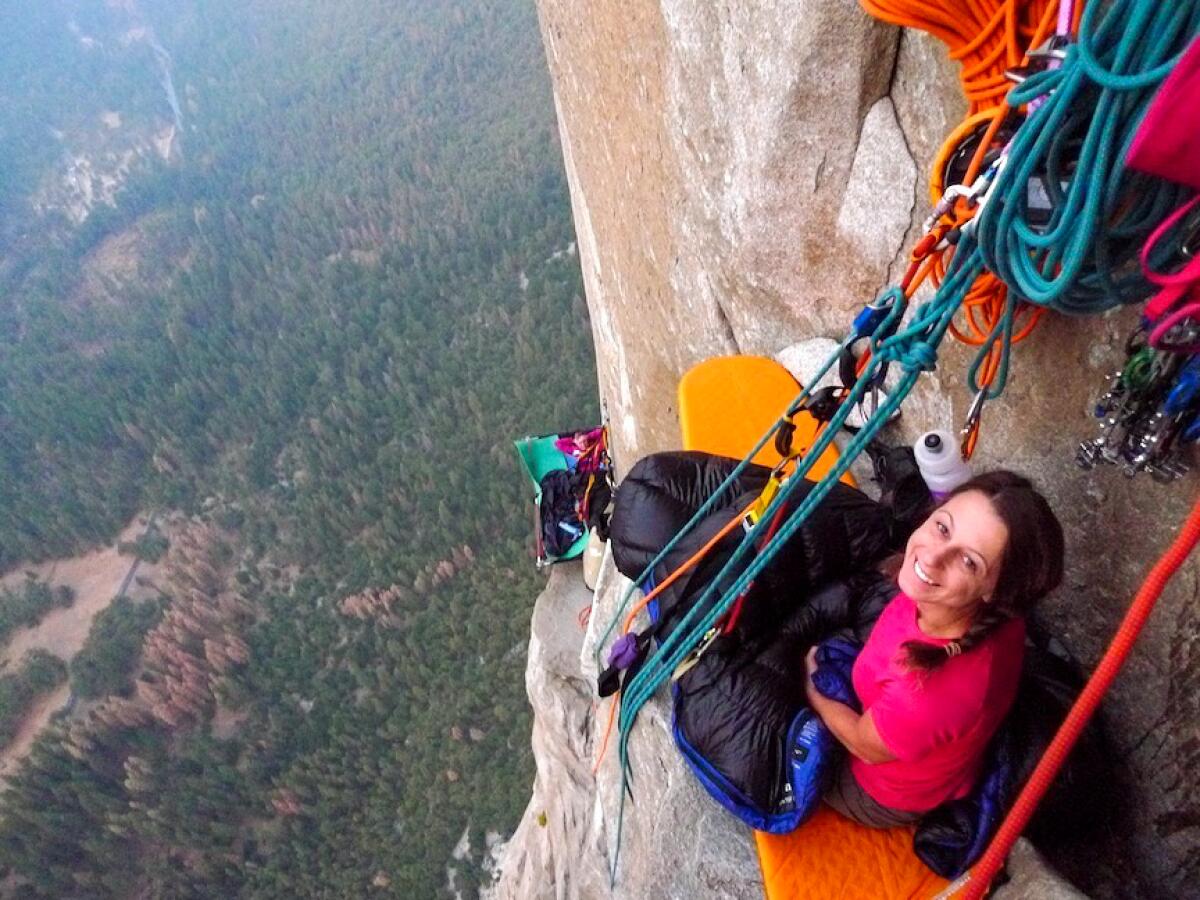
Though several climbers have died on El Capitan in the last decade, “I knew what the risk factors were and I determined the probability [of a catastrophic accident] to be low. I think that’s similar to what those people in the submarine did, right?”
Moye’s climb went fine. The book came out the following year.
“My motivation is always story,” Moye said. “What’s the story? So when I’m doing things, they’re a means to an end.”
Sometimes there’s deep research and logic behind our decisions, whether we’re seasoned adventurers or weekend warriors. But as Babu noted, virtually all of our choices about risk are colored by personal experience and made with incomplete information.
As Babu said, “There’s no way to really know. ... We do our best with what we think we know, which is never the full picture.”
More to Read
Sign up for The Wild
We’ll help you find the best places to hike, bike and run, as well as the perfect silent spots for meditation and yoga.
You may occasionally receive promotional content from the Los Angeles Times.
